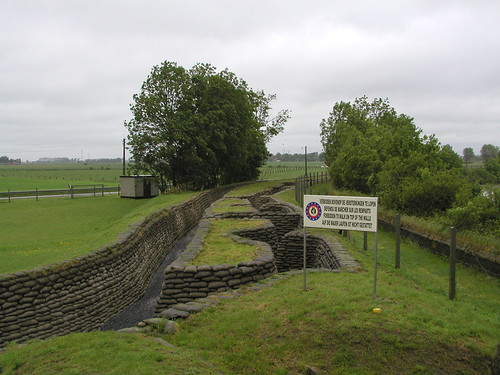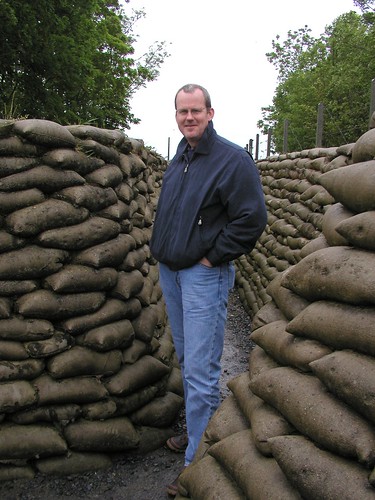Our first stop was to an interesting museum called Dodengang (Death Walk), which has preserved a network of trenches where Belgian troops faced and held off their German adversaries for four years.


The trenches here are 400 meters long, dug into the dyke of Ijzer, the forward fighting trench, as well as the rear support trench (not seen in this photo). The trenches were not dug into the ground but rather were built at night by heaping up sandbags, wood, earth, and miscellaneous materials.
After the four year siege, the Belgian soldiers from the various units who served here renamed the trench area le Bayou de la Mort (the Trench of Death), a name that it richly deserved. One of the reasons was due to the use of one of the most appalling weapons used on the Ijzer front. Shells filled with mustard gas were fired by the Germans on to the Belgian positions. The sticky contents evaporated slowly and anyone accidentally touching the product suffered terrible burns, in addition to the damage caused to the eyes and lungs. In order to deal with the danger, every soldier serving in the Trench of Death was issued two gas masks.


No comments:
Post a Comment